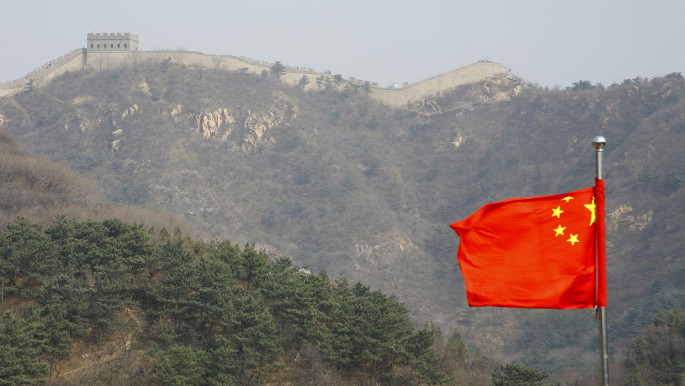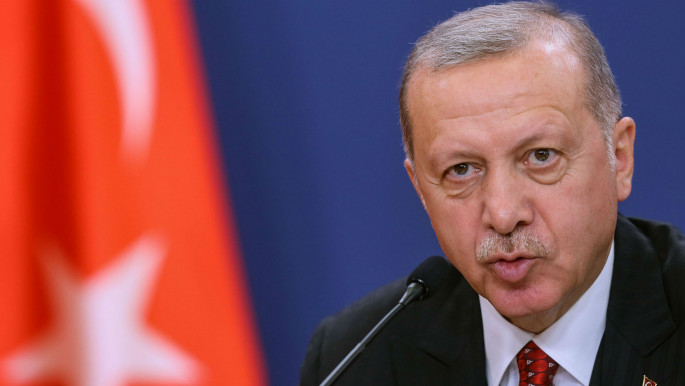Russia aims to become a major arms trader in the Middle East again
Russia is seeking to sell advanced military hardware to several US allies in the Middle East, potentially securing lucrative deals in the region for the first time since the collapse of the Soviet Union.
During the 1991 Paris Air Show, Israeli Defence Minister Moshe Arens was taken completely by surprise when Soviet Aircraft Industry Minister Apollon Systsov offered to sell Israel MiG-31 Foxhound fighter jets.
"With just three MiG-31s you could protect all of Israel," Systsov told Arens.
The offer was so surprising because Moscow never sold Israel military hardware. Throughout most of the Cold War, it sold large quantities of arms to Israel's various Arab adversaries. However, in 1991 the Soviets were so cash-strapped they were much more flexible about which countries they offered to sell weapons to.
The Soviets also offered to sell the S-300 air defence missile system to Israel, bragging that it was superior missiles to their American equivalent, the Patriot missile used during the Persian Gulf War earlier that year.
According to Noah Shachar, spokesperson for Israel's RAFAEL defence firm at the time, "the Soviets made clear in the meetings that everything [in their arsenal] is on the market."
Moscow was also in negotiations to sell the United Arab Emirates, a US ally, MiG-31s.
 |
|
| Read also: How China is heavily contributing to Middle East drone and missile proliferation |
None of these proposed deals materialised, and neither Israel nor the UAE bought MiG-31s before the Soviet Union collapsed a mere six months after Aren's peculiar encounter with Systsov.
Russia successfully sold Iran a fleet of MiG-29 Fulcrum fighter jets during this period. The US and the rest of the West ignored the sale since they were preoccupied with combating Iraq's dictator Saddam Hussein.
Russia also sold Iran Kilo-class submarines in the early 1990s. Iran ordered S-300s from Russia in 2007, but they weren't delivered until 2016 following years of intense pressure from the United States and Israel.
Washington successfully prevented several other Russia-Iran arms deals.
The days of the Soviet Union making stupendous arms deals with various Middle East states were clearly over.
Today, Russian President Vladimir Putin is seeking to reestablish his country as a major exporter of arms to the region. In recent years, Russia has made deals with several countries in the region, most of them US allies that traditionally bought Western weapons.
 |
In recent years, Russia has made deals with several countries in the region, most of them US allies that traditionally bought Western weapons |  |
Most notably, Russia sold NATO member Turkey S-400 air defence missiles in a deal that is arguably as extraordinary and surprising as the prospect of the moribund Soviet Union selling Israel MiGs.
Ankara went ahead with the sale despite several warnings from the US not to do so. Washington suspended Ankara from the F-35 Joint Strike Fighter programme in response.
 |
|
| Read also: Turkey's ever-growing indigenous arms industry |
Turkish President Recep Tayyip Erdogan has remained adamant that Turkey will keep and operate its S-400s.
Erdogan has previously said the missiles would be fully deployed and operational by April 2020. Turkey and Russia are negotiating technology transfer and co-production of the system, which would greatly expand the NATO member's increasing military ties with Moscow.
Furthermore, Turkey is presently contemplating buying Su-35 air superiority fighters from Russia.
Erdogan also expressed interest in Russia's stealthy fifth-generation Su-57 jet. However, that fighter has not yet been mass-produced nor have any export variants been built. Only last May did Putin order the construction of 76 of the warplanes for the Russian military. They are scheduled to enter service in 2028.
In September, the head of Russia's Federal Service for Military-Technical Cooperation Dmitry Shugaev told reporters that, "Consultations have begun on both the Su-35 and, as a longer-term subject, the Su-57." He cautioned that it's "premature to speak about any contract talks."
Under the United States' Counter America's Adversaries Through Sanctions Act (CAATSA), Ankara should face sanctions for buying the S-400. However, Washington has not yet imposed any.
In recent years Egypt, another US ally, purchased a fleet of MiG-29s and S-300s from Russia, the most arms the country has bought from Moscow in half-a-century.
 |
This year, Egypt also signed a $2 billion agreement to buy a fleet of Su-35s |  |
This year, Egypt also signed a $2 billion agreement to buy a fleet of Su-35s. Washington warned Cairo that it could face CAATSA-related sanctions if it proceeds with this deal. It's unclear if Egypt will back down.
Egypt's military consists primarily of American-made hardware, a lot of it bought with billions of dollars in US military aid given to Cairo since the signing of the Israel-Egypt peace accord 40 years ago.
Aside from purchasing MiGs, Egypt also bought a fleet of French-made Dassault Rafale multirole jets, lessening Cairo's dependence on Washington for the supply of arms.
Russia is currently negotiating the sale of S-400s to Saudi Arabia.
Also, the US Defense Intelligence Agency recently speculated that Iran might buy Su-30 jet fighters and S-400 missiles when the UN arms embargo against Tehran is lifted in October 2020.
In February 2017, Russia's state-owned Rostec defence firm and the UAE announced an agreement to build a new fighter jet, reportedly a stealthy fifth-generation aircraft. The project, reportedly based on the MiG-29, was estimated to take between seven and eight years to complete.
Rostec also suggested that the aircraft could be built on Emirati soil.
As of writing, however, there is no indication that the project has even begun – initial reports said it would begin in 2018.
This November, Rostec CEO Sergei Chemezov suggested that countries that buy Su-57s could also manufacture some parts of the plane.
"Su-57 – India, most probably Emirates. They have been discussing it [buying these aircraft] for a long time, though no decision has been delivered yet," Chemezov told reporters at the Dubai Air Show.
"Localisation [has been offered]… It does not matter whether it is [the] United Arab Emirates, India or Turkey, we will rely on what they can do."
Consequently, Russia and the UAE may work on building an export variant of the Su-57 rather than a new aircraft. Moscow needs investment in the troubled project – which has to date only produced a dozen flyable prototypes of the plane despite it being in development since 2002 – and Abu Dhabi wants a fifth-generation fighter.
The US isn't willing to sell the UAE F-35s.
Some of these projects will likely get off the ground and, like the Turkish S-400 deal and possibly the Egyptian Su-35 deal as well, irritate the United States. Others will more likely remain confined to the drawing board.
For now, and likely for the foreseeable future, the US remains the largest seller of arms to the Middle East by far. The Stockholm International Peace Institute estimates that, from 2014 to 2018, the US sold 54 percent of the arms delivered to the region while Russia sold a comparably much less significant 9.5 percent.
Nevertheless, Moscow's dealmaking in the Middle East in recent years is very significant. It has potential to grow, especially now that US allies in the region are worried about Washington's commitment to their security.
As The Washington Post noted, "allies such as Saudi Arabia and the UAE may see Russia as a more reliable alternative – even if it is opposed to the United States and allied with many of their own rivals."
 |
Putin cleverly used the incident to urge Saudi Arabia to follow Iran and Turkey's lead by buying Russian air defence missiles, something Riyadh might well do in the near future |  |
In September, Saudi Arabia's American-made air defences failed to intercept Iranian cruise missiles and drones targeting the country's oilfields. Putin cleverly used the incident to urge Saudi Arabia to follow Iran and Turkey's lead by buying Russian air defence missiles, something Riyadh might well do in the near future.
Putin visited Saudi Arabia and the UAE in October, the first time he visited those two states since 2007. The Saudis warmly welcomed him in Riyadh. Both countries have recently made bilateral trade deals worth $2 billion along with several other agreements that signal growing ties.
As BBC's Frank Gardner correctly noted, while Russia is increasing its presence in the region since decisively intervening in Syria in 2015, the US under President Donald Trump, "appears to be heading for the exit, despite rushing extra troops to Saudi Arabia's air defences after the equipment it had sold the Saudis failed to prevent the catastrophic attack on September 14.
"Bottom line: the Saudis and their Gulf Arab allies are looking to diversify their partnerships away from a heavy dependence on the West."
It's against this backdrop that we will likely see more Russian military hardware in Middle East arsenals in the not-too-distant future.
Paul Iddon is a freelance journalist based in Erbil, Iraqi Kurdistan, who writes about Middle East affairs.
Follow him on Twitter: @pauliddon





 Follow the Middle East's top stories in English at The New Arab on Google News
Follow the Middle East's top stories in English at The New Arab on Google News


